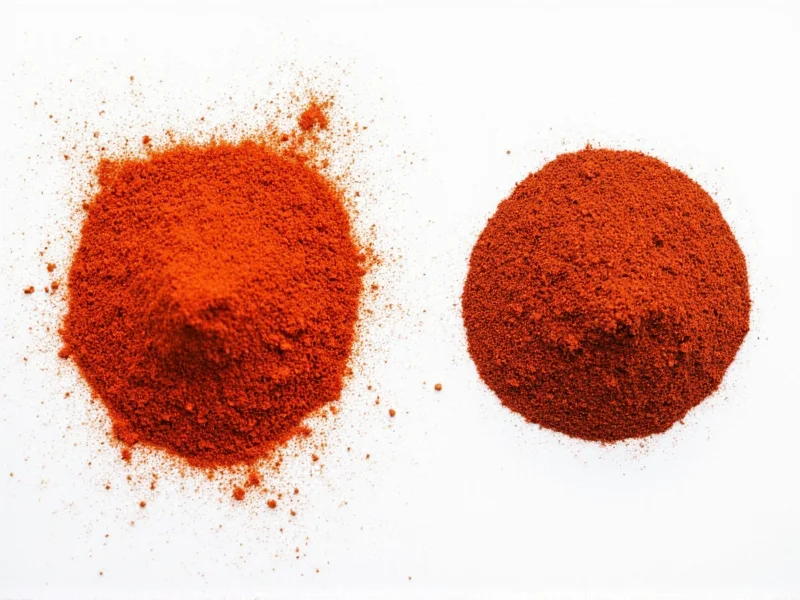Many home cooks mistakenly treat cayenne pepper and ground red pepper as interchangeable ingredients. This confusion leads to inconsistent results in recipes—from unexpectedly fiery dishes to disappointingly bland meals. Understanding the precise differences between these seasonings is essential for controlled flavor development in cooking.
Defining the Terms: Beyond the Label Confusion
The term ‘cayenne pepper’ specifically refers to the ground form of the cayenne chili pepper, a thin, tapered fruit measuring 2-5 inches long with a bright red color when mature. True cayenne powder delivers consistent heat and a distinct earthy, slightly fruity flavor profile.
‘Ground red pepper’ creates significant confusion because it’s used inconsistently across regions and brands. In some markets, it’s synonymous with cayenne. More commonly, however, it refers to a milder blend of dried red peppers that may include paprika, ancho, or other varieties. This labeling ambiguity causes frequent substitution errors in home cooking.
Key Differences Between Cayenne and Ground Red Pepper
| Characteristic | Cayenne Pepper | Ground Red Pepper |
|---|---|---|
| Botanical Source | Specific Capsicum annuum variety | Mixed red peppers (often paprika-based) |
| Heat Level (SHU) | 30,000-50,000 | 500-1,000 (typically) |
| Flavor Profile | Sharp, intense heat with earthy notes | Mild, sweet, sometimes smoky |
| Color | Bright orange-red | Deep brick red |
| Common Culinary Uses | Cajun/Creole dishes, hot sauces, spice rubs | Coloring soups/stews, mild seasoning |
Substitution Guidelines for Home Cooks
Substituting between these seasonings requires careful adjustment. When replacing cayenne with ground red pepper, use 3-4 times the amount to achieve similar color impact, but recognize you won’t replicate the heat. Conversely, substituting cayenne for ground red pepper demands extreme caution—start with 1/8 teaspoon cayenne for every tablespoon of ground red pepper called for, then adjust to taste.
Chef Marco Rodriguez of the Culinary Institute notes: “The biggest mistake I see is treating these as direct substitutes. Cayenne provides aggressive heat that builds, while standard ground red pepper offers subtle warmth. Understanding this difference separates competent home cooks from truly skilled ones.”
Nutritional Comparison and Health Benefits
Both seasonings contain capsaicinoids, but cayenne delivers significantly higher concentrations due to its intense heat. A single teaspoon of cayenne provides approximately 44% of your daily vitamin A needs and notable vitamin C, while ground red pepper offers more modest amounts. The higher capsaicin content in cayenne correlates with stronger metabolic and anti-inflammatory effects according to research published in the Journal of Nutritional Science.
Purchasing and Storage Best Practices
To avoid confusion when shopping, examine ingredient labels carefully. True cayenne should list “Capsicum frutescens” or “cayenne pepper” as the sole ingredient. Products labeled “ground red pepper” without further specification typically indicate milder blends.
Store both seasonings in airtight containers away from light and heat. Properly stored, they maintain potency for 6-12 months. Discard if the aroma becomes faint or the color noticeably fades—these indicate diminished flavor and heat compounds.
Common Misconceptions Clarified
Many believe “ground red pepper” is simply a milder form of cayenne, but they originate from different pepper varieties. Another misconception suggests regional differences explain the confusion, but labeling inconsistencies exist globally. The most persistent myth claims these seasonings are nutritionally identical—while similar, cayenne’s higher capsaicin content creates meaningful differences in health impact.











 浙公网安备
33010002000092号
浙公网安备
33010002000092号 浙B2-20120091-4
浙B2-20120091-4